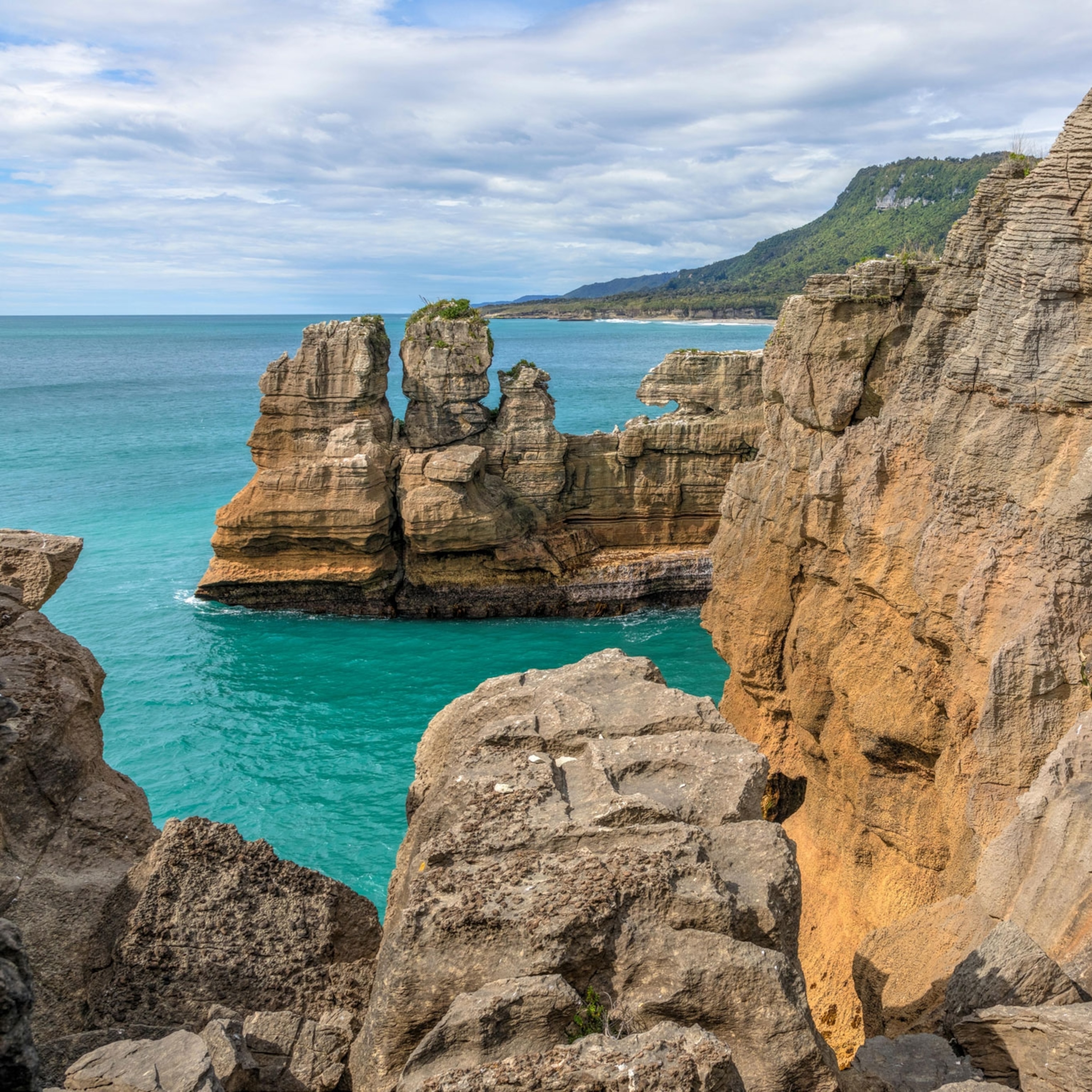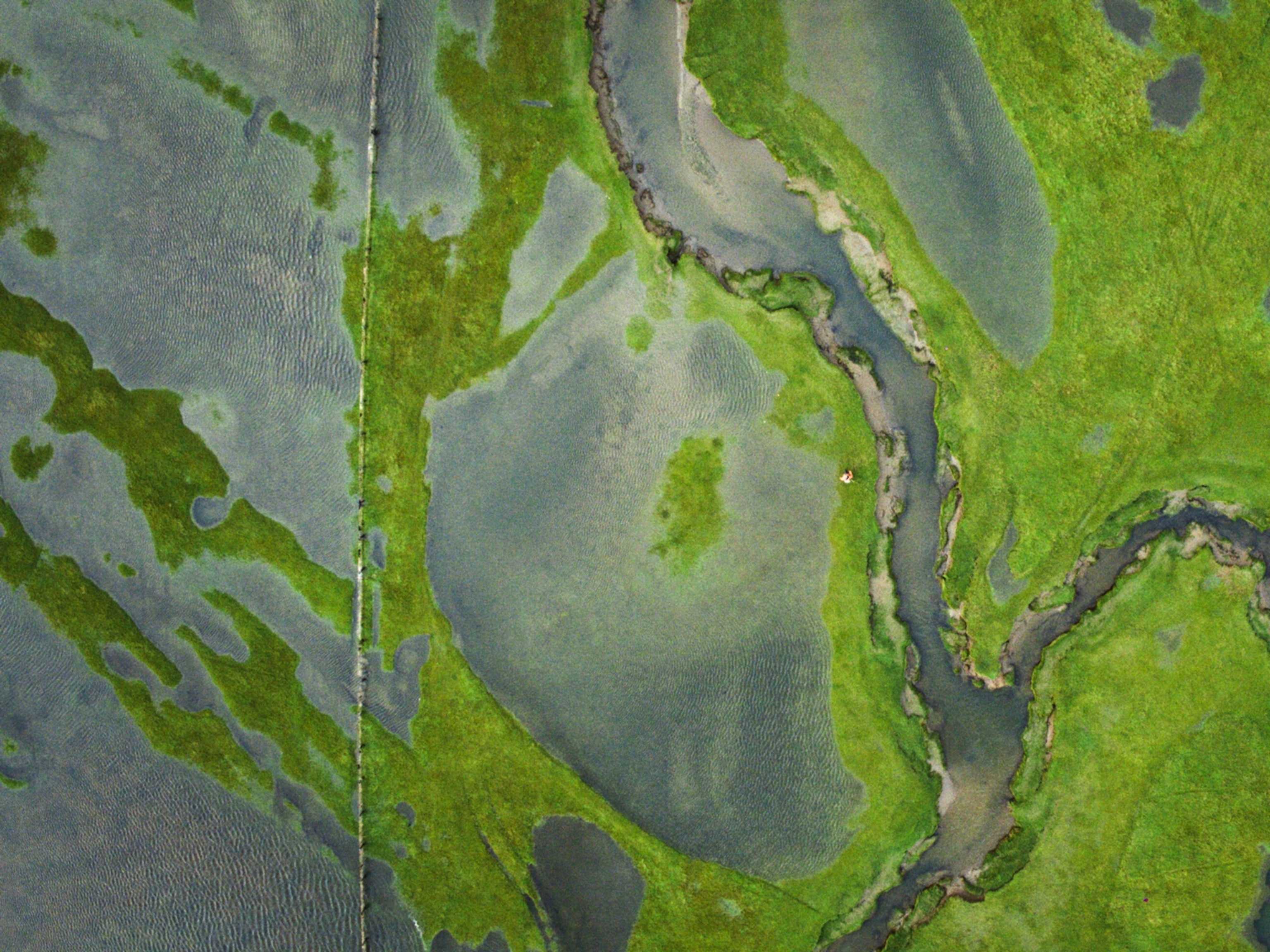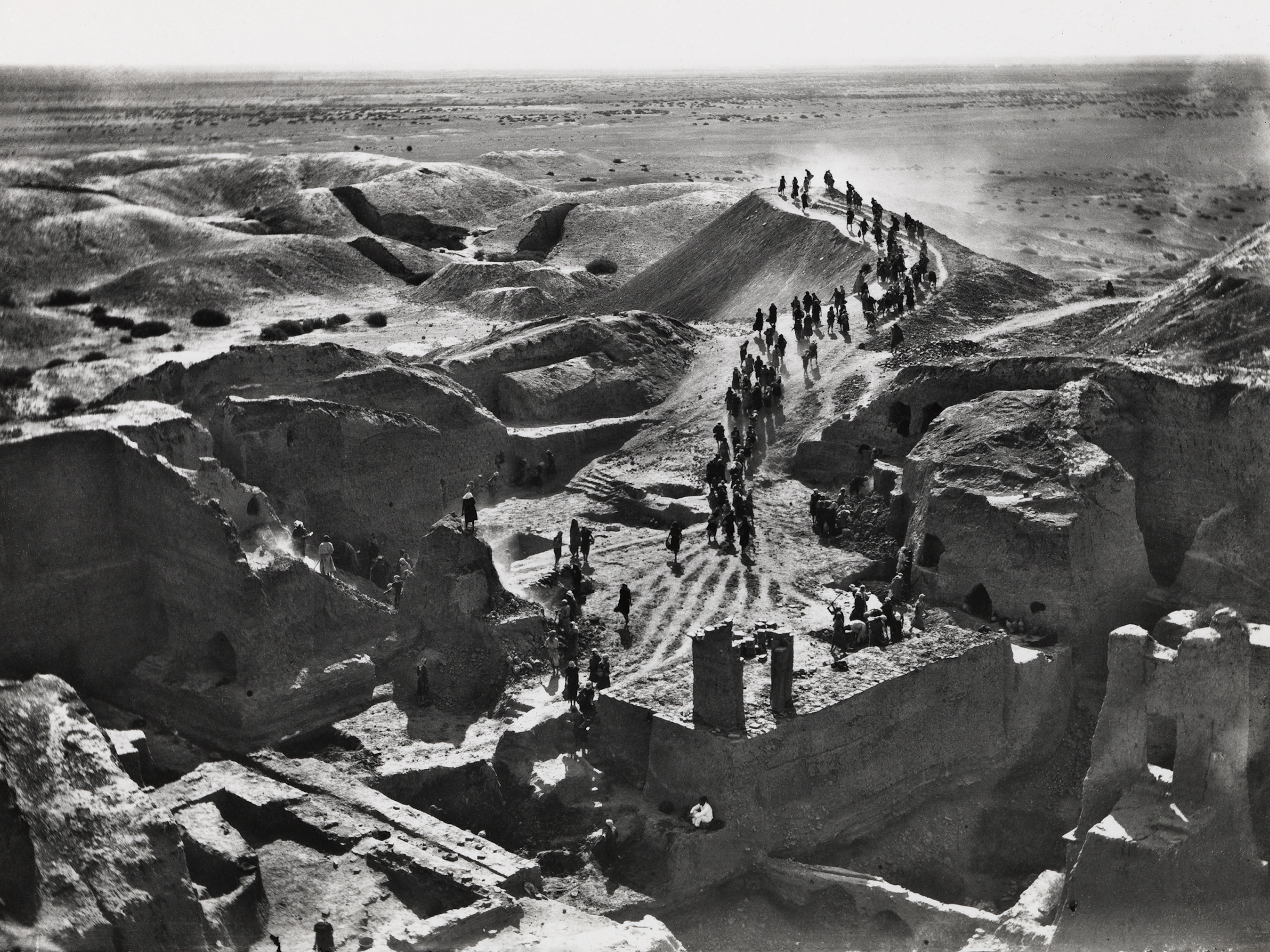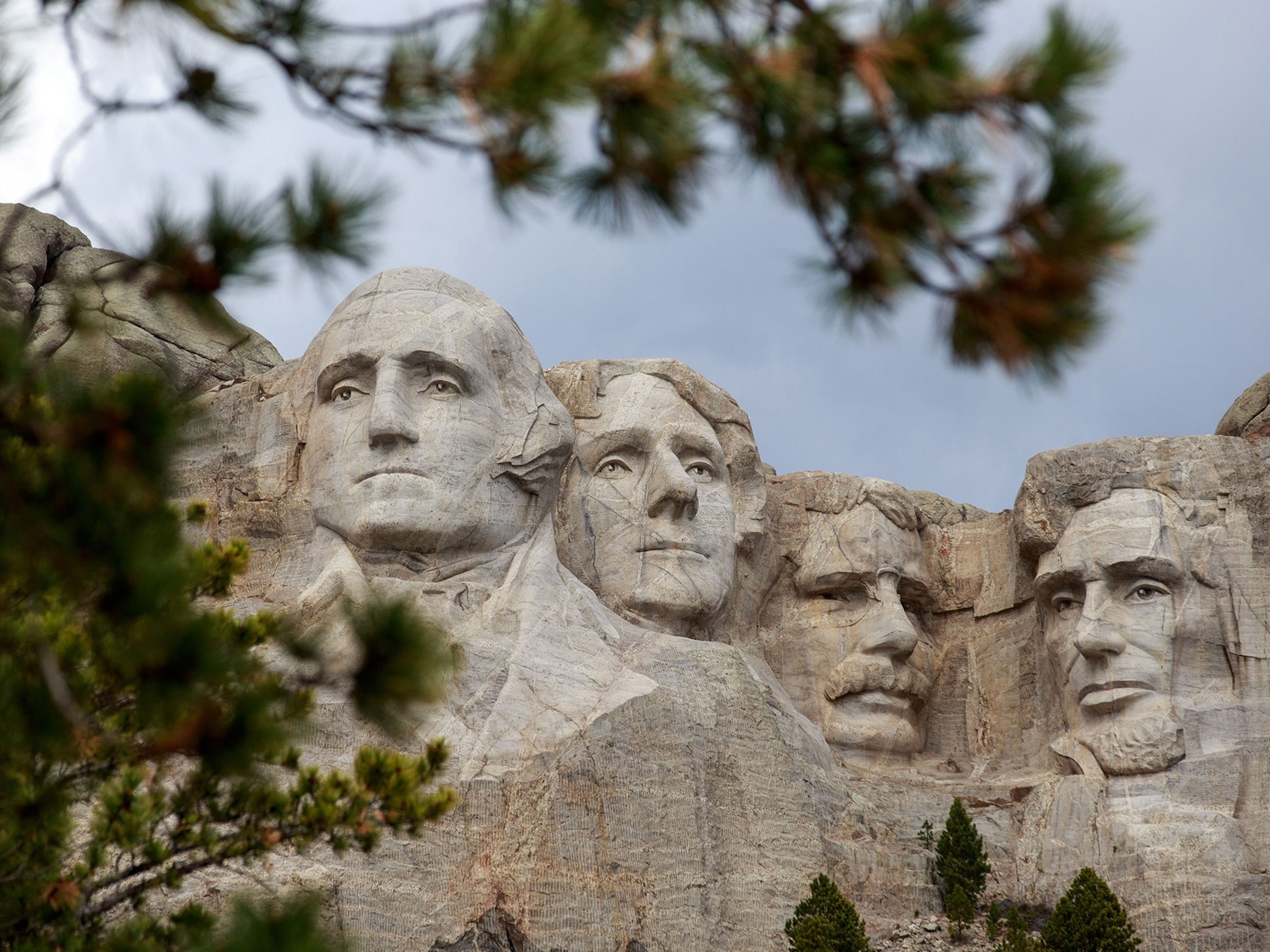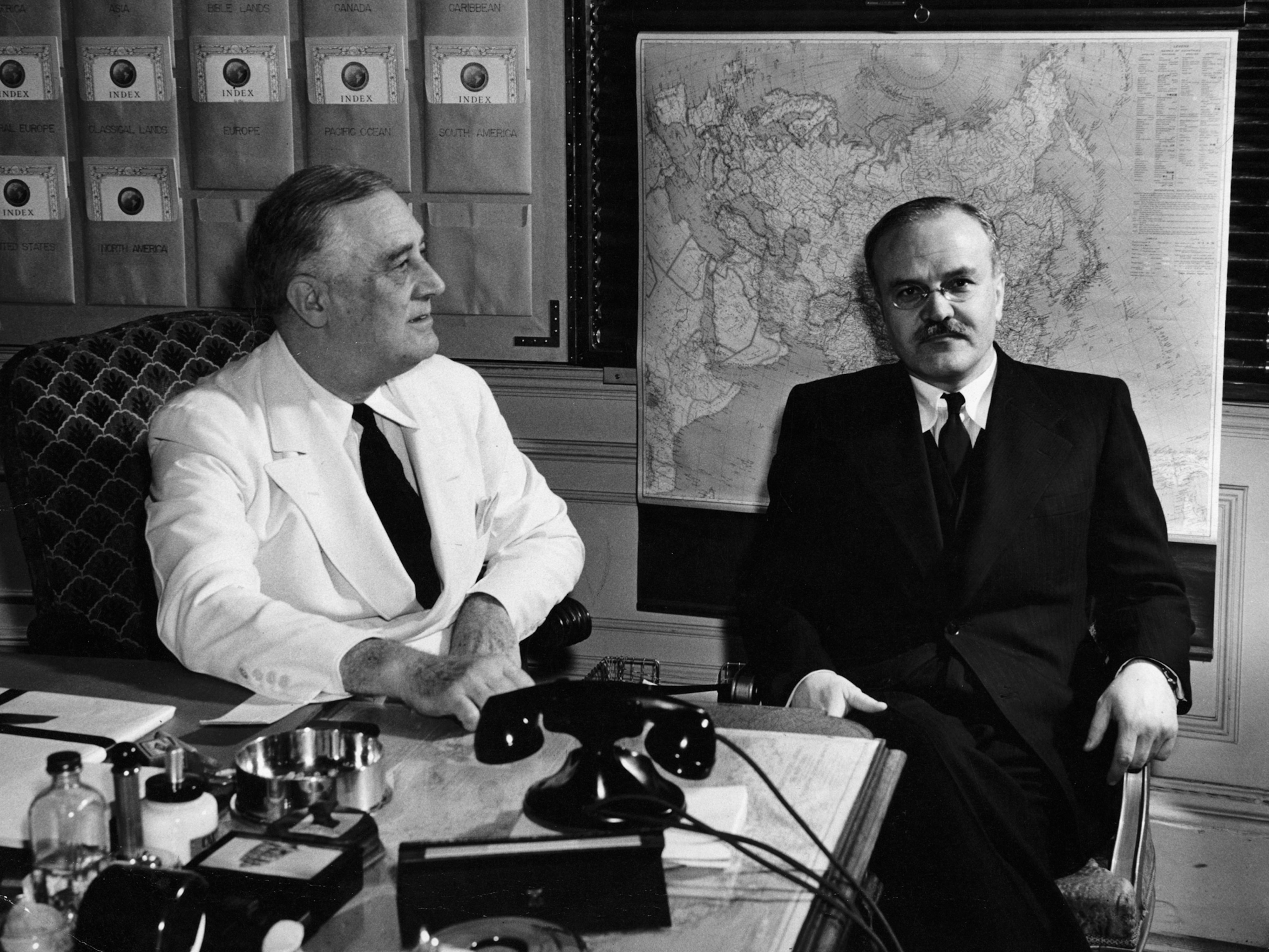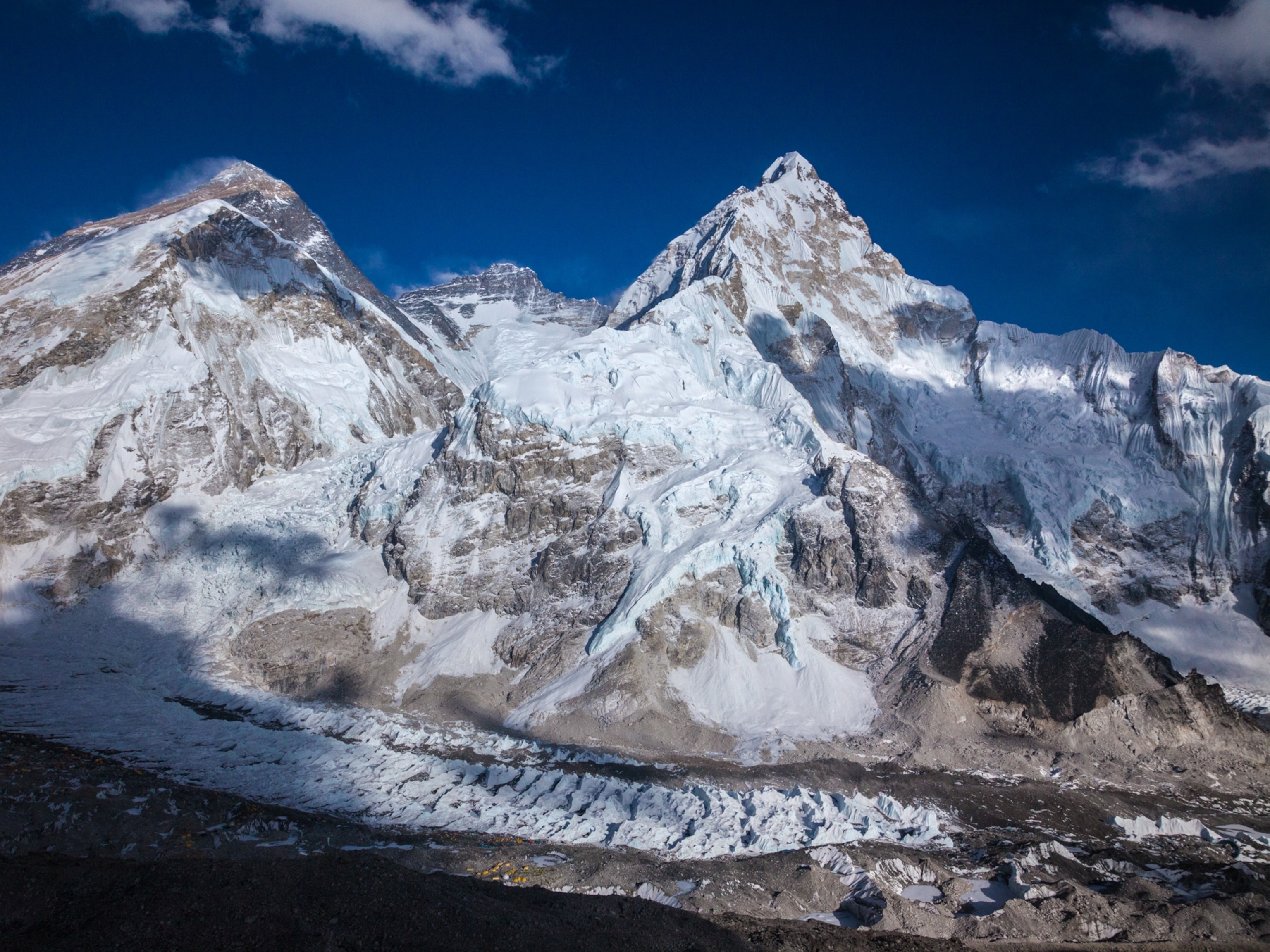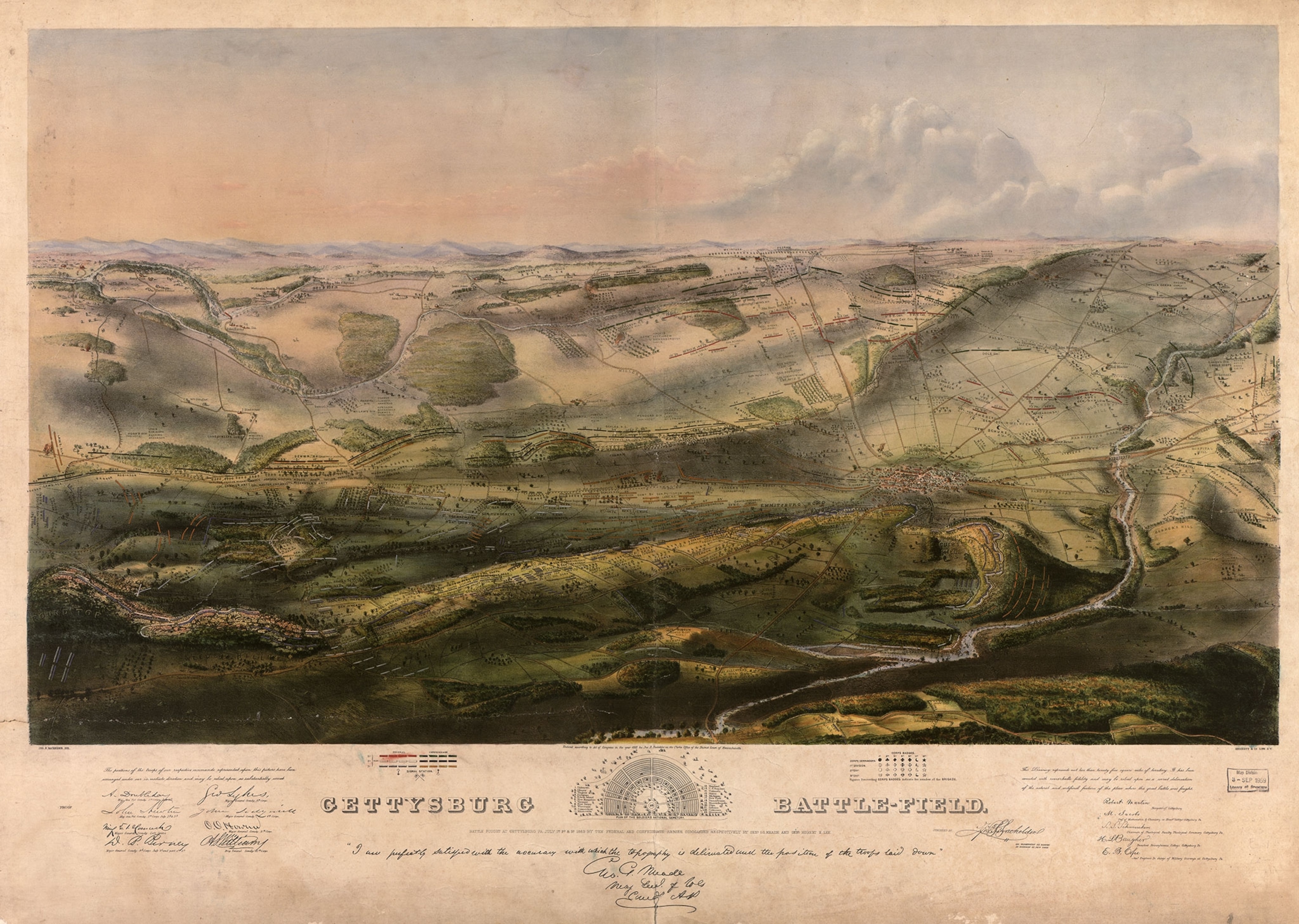
Gorgeous Maps Reveal the History of America’s National Parks
To celebrate the National Parks System’s centennial, Harvard mined its map collection to find these historic gems.
CAMBRIDGE, Mass.—John Badger Bachelder arrived at Gettysburg before the soldiers’ bodies were buried. He spent the next 84 days studying the battlefield by horseback and filling notebooks with the accounts of injured soldiers from both sides of the battle. He even took some of the wounded back to the scene so they could point out their positions and recount what had happened.
The striking panoramic map of Gettysburg (above) that Bachelder based on this work is meticulously detailed. It depicts where every Union and Confederate regiment stood during each of the three days of battle in July, 1863. His work was so accurate, in fact, that Bachelder was put in charge of deciding where most of the 1,320 physical monuments and markers would be placed in what is now Gettysburg National Military Park.
“I think it's beautiful, and it just tells such a great story,” says Bonnie Burns, head of geospatial resources for the Harvard Map Collection.
Burns is a co-curator of a new map exhibit at Harvard celebrating the 100th anniversary of the formation of the National Parks Service. Burns and Harvard digital cartographer Scott Walker selected the maps entirely from within Harvard’s incredible collection of around 400,000 maps and atlases. Burns gave me a tour of the exhibit shortly after it opened in May.
Grand Canyon

One map that grabbed my attention right away was this gorgeous map of the Grand Canyon by mountaineer and cartographer Bradford Washburn and his wife Barbara, published by National Geographic in 1978. The Washburns spent seven years working on the map, including 144 days in the field measuring and remeasuring hundreds of miles of trails with a wheel-mounted odometer, and 712 helicopter landings. They then worked with the Topographical Institute of Switzerland on drawing the cliffs and National Geographic’s Tibor Toth to create the beautifully rendered shadow and relief.
I don’t know how anybody could walk by this map without stopping.
The Washburns were awarded National Geographic’s Alexander Graham Bell Medal in 1980 for their work in cartography, which is exemplified by their Grand Canyon map. “Maps are simply not made like this any more,” wrote cartographer Kenneth Field. “It’s the epitome of dedication and commitment to the craft of making a map.”
Very few of the maps on display at Harvard are official National Parks Service maps (for more on those read Greg Miller’s recent piece on how NPS maps are made), and many of them substantially predate the formation of the parks they depict and the Parks Service. “We have maps of these areas from before anybody even thought about the idea of a national park,” Burns says.
Yellowstone
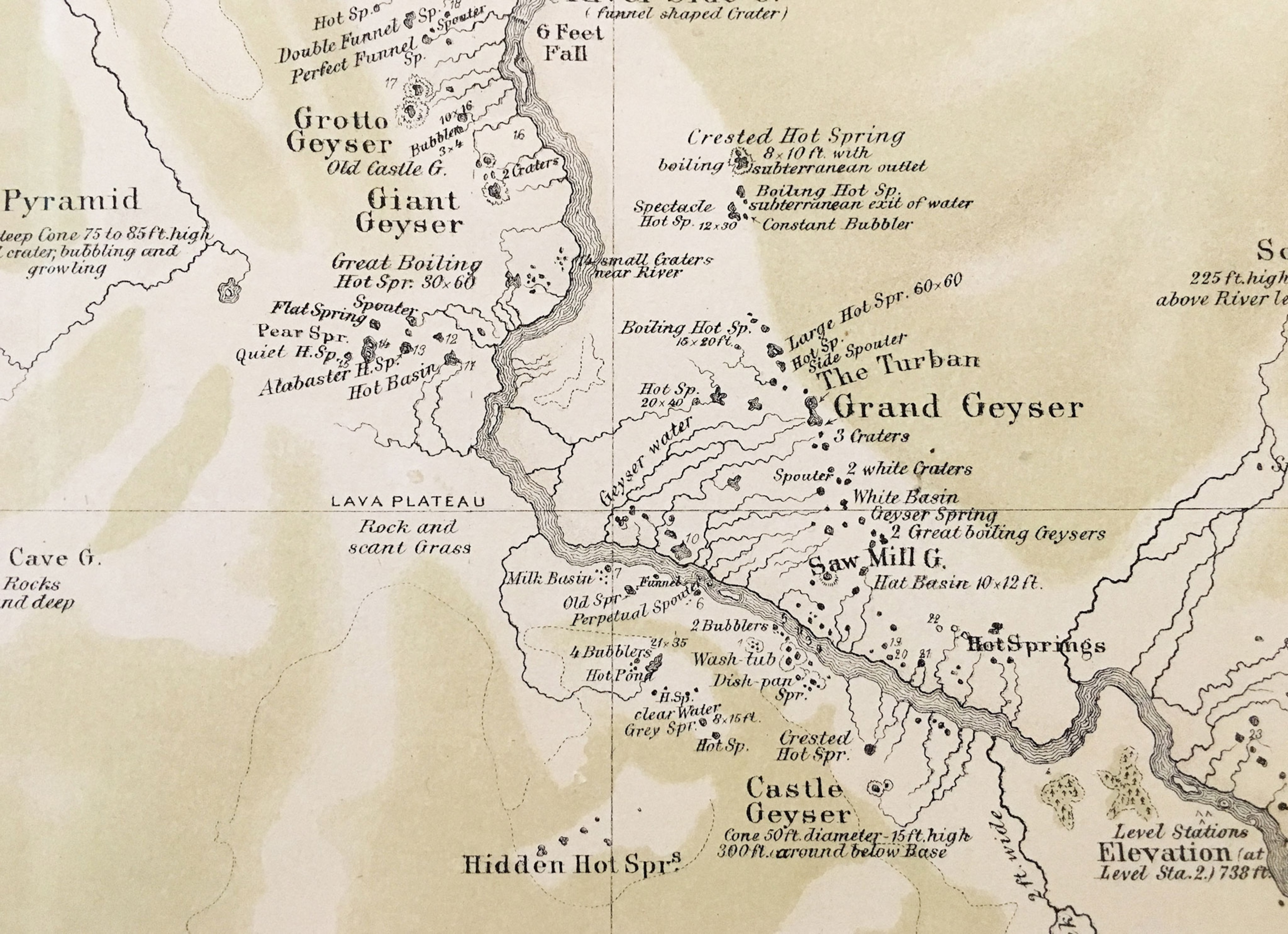
Before Yellowstone became America’s first national park in 1872, Congress sent a group of surveyors led by geologist Ferdinand Vandeveer Hayden to explore and document the prospective park. The Hayden survey made the first detailed maps of some of the primary geothermal features. Incredibly, the fieldwork for the two maps of the Upper (above) and Lower Geyser Basins that are included in the exhibit were completed in just a week. “It was amazingly fast,” Walker says.
Hayden’s 500-page report on the area, including paintings by Thomas Moran and photographs by William Henry Jackson, helped convince Congress to create Yellowstone National Park. The National Parks Service wouldn’t come into existence for another 44 years.
Hawaii
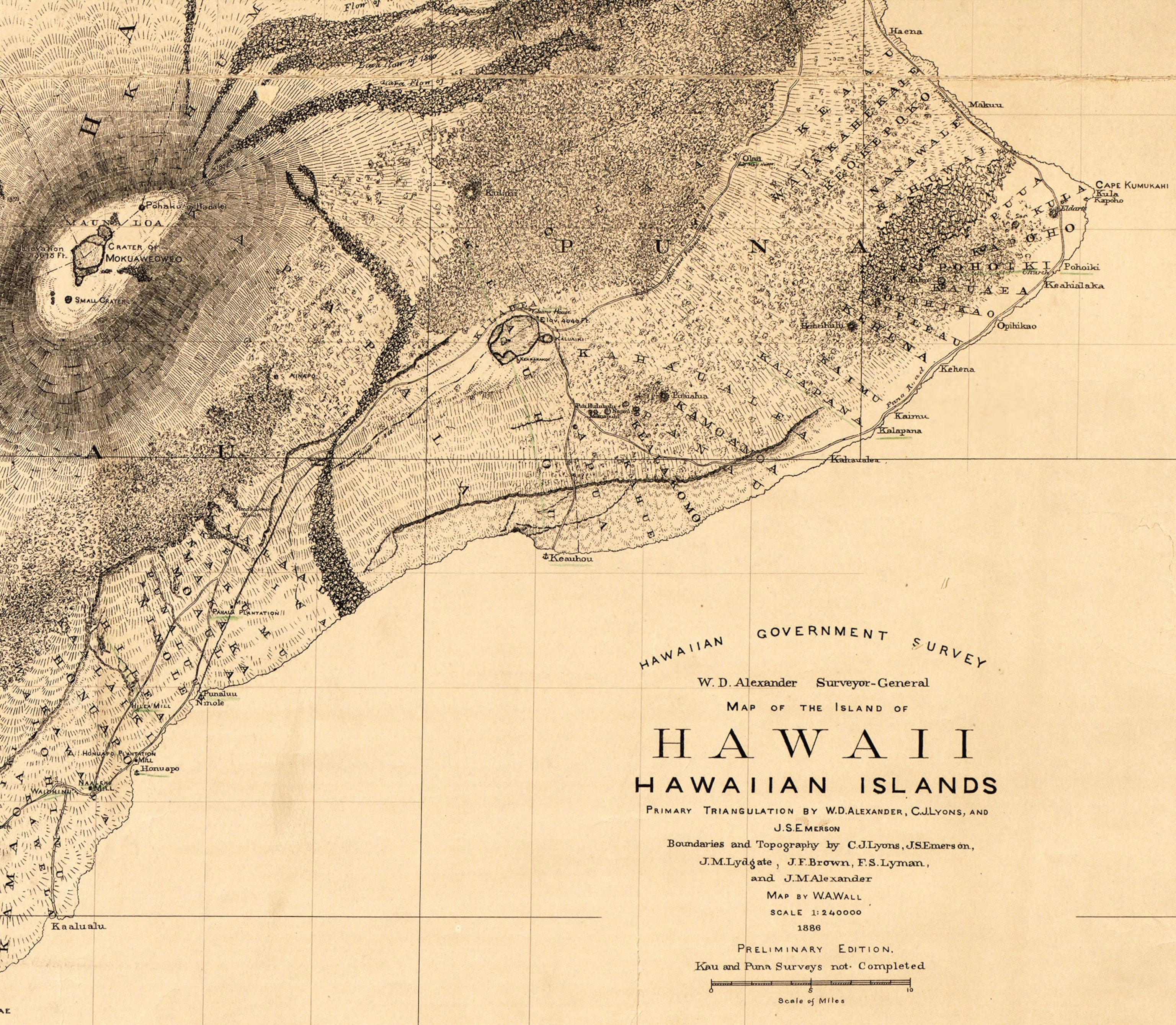
Hawaii National Park became the 11th park in 1916, just weeks before the Park Service was formed. In 1961, the park was split into Hawai’i Volcanoes National Park on the Big Island and Haleakalā National Park on Maui. The map above of the Island of Hawaii was made in 1885 as part of the Hawaiian Government Survey, to determine what land the government had left to sell.
“I really like the history behind those Hawaii maps,” Burns says. The map shows the locations of former traditional land-use rights, based on areas known as ahupua’a. “They're still drawn on the edges of the map so you can see which tribes, which clans had access to various parts, and how the land rights went from the ocean to the mountain, so that you get a whole slice—you get access to a lot of different aspects of the ecosystem.”
Crater Lake
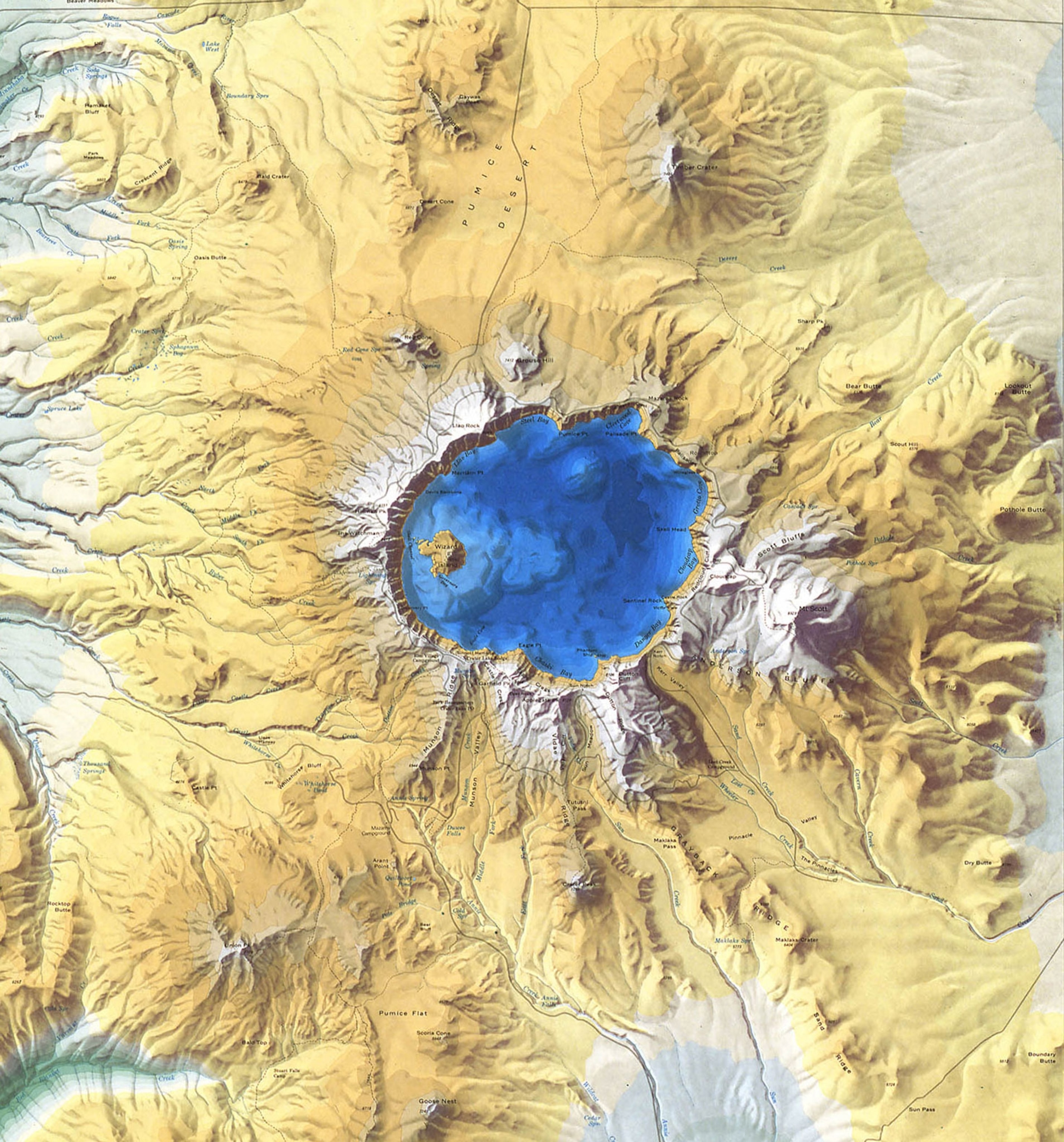
The most recent piece in the exhibit is a beautiful map of Crater Lake from 1989 by one of my favorite mapmakers, Raven Maps. The first scientific mapping of Crater Lake was done a century ago in 1886 by geologist Clarence Dutton (also one of the founders of the National Geographic Society), who used piano wire to measure the depth of the lake. His measurement of 1,996 feet was updated in 1959 based on acoustic echo sounding. The new depth of 1,932 feet was used by Raven Maps.
In 2000, the lake was surveyed again with multibeam sonar data. “They did 16 million points,” Burns says, “so just an incredibly dense point cloud over the whole thing to get much more accurate and detailed data." The survey led to another revised depth of 1,949 feet.
Blue Ridge Parkway
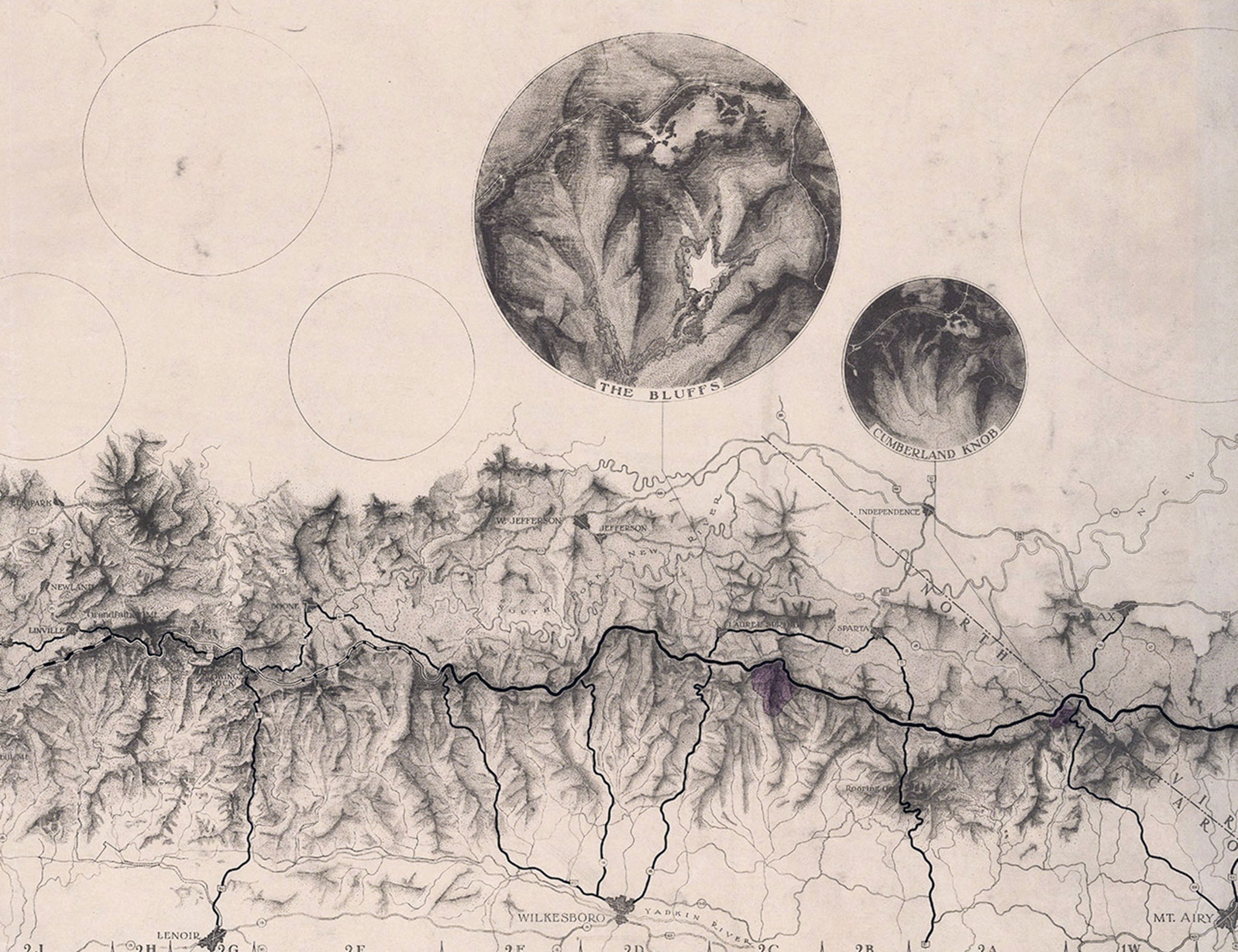
Some of the maps tell a story about how certain parks came to be. A map of the National Park Service’s “master development plan” for the Blue Ridge Parkway is a great example. “It’s interesting because it’s one of the few that’s entirely designed landscape as a park,” Burns says. “It was made specifically to connect Shenandoah Skyline Drive and Shenandoah National Park to the Great Smoky Mountains National Park.”
Originally the park was just going to be an 800-foot-wide strip of land containing a road. The landscape architect they hired pitched an idea to create mini-parks along the road so that people would have a place to stop. “He described them as beads on a necklace,” Burns says, “designing little small parks along the way where they would put amenities.”
The map is a long strip that shows the plans for the mini-parks in circular insets along the road. But they hadn’t decided where to put them all, leaving many of the circles empty. In the end, they scrapped some of the planned stops, including one intended to be the main point of amenities for black travelers. “By the time they got to that point on the construction, the parks had officially been integrated,” Burns says.
Today the National Parks Service has 59 national parks in its charge, as well as 82 national monuments, 78 national historic sites, 11 national battlefields, 15 national rivers, 19 national preserves, and 147 other units of various types. The Harvard exhibit doesn’t include them all, of course, but the three dozen maps it does include show how long, winding, and interesting the history of the National Parks System is.
The Harvard exhibit, “The Land Remains: A Century of Conservation in America’s National Parks,” is located in the Pusey Library on Harvard campus in Cambridge, Mass., and runs through September 26.

